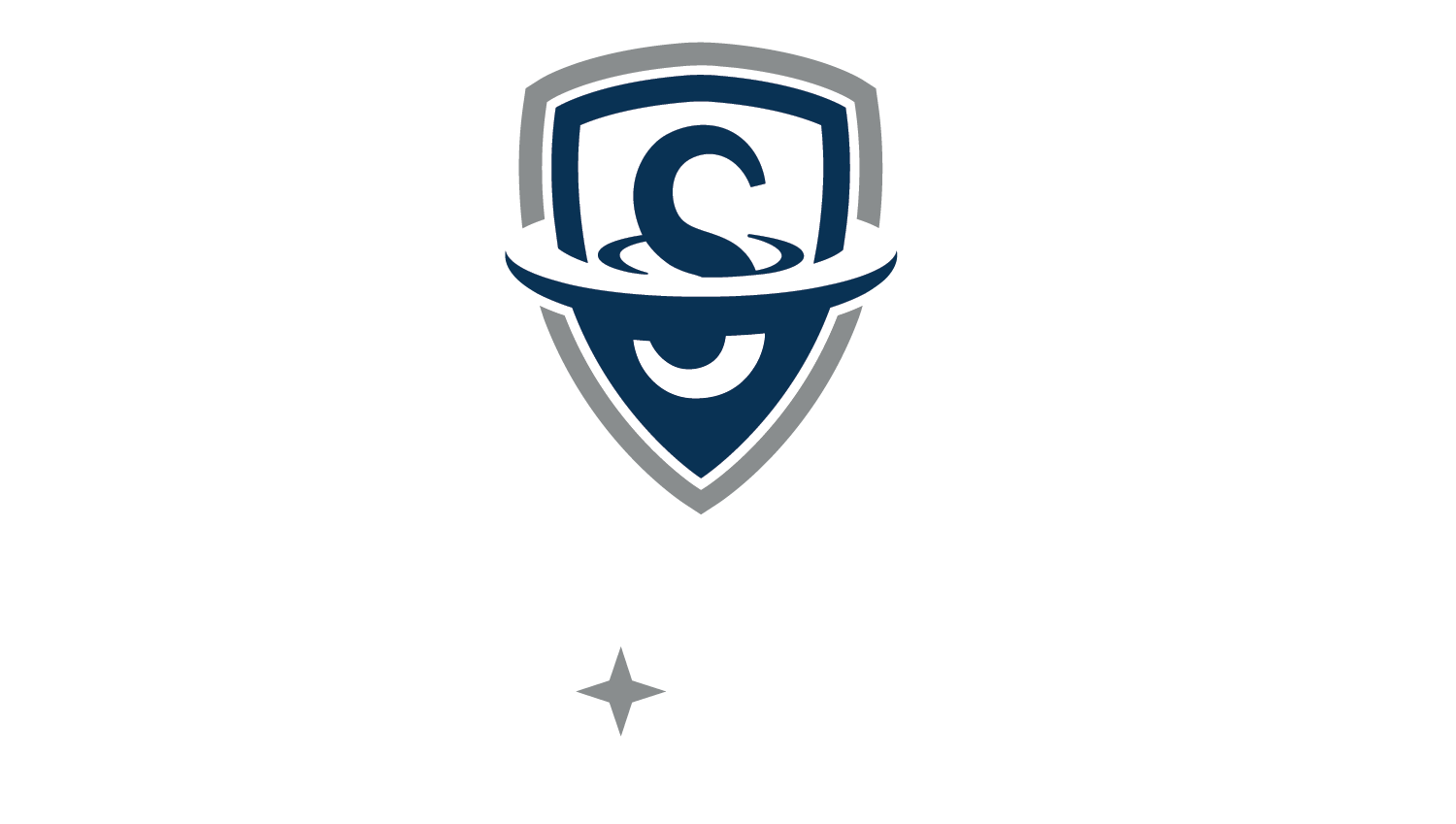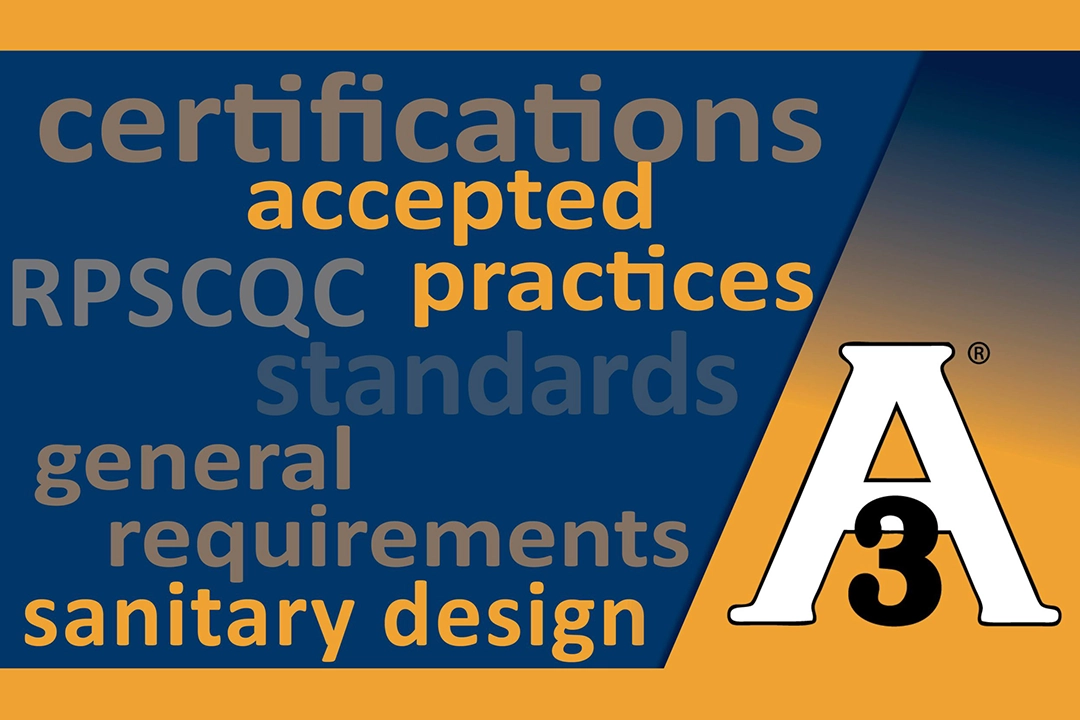Understanding 3-A Standards, symbol authorization, and Accepted Practices as it pertains to one’s process is important, albeit not easy. That is why Sani-Matic employs experts dedicated to staying current with 3-A Standards.
One key Sani-Matic 3-A Standards expert is Vice President, Sales and Marketing Bryan Downer. He is an active 3-A Standards Working Group member and Certified Conformance Evaluator (CCE).
“With over 70 active standards, there is a lot to keep track of to ensure all components and systems are meeting the required standards. Our team enjoys sharing our insights, so our customers feel confident about meeting their sanitary process requirements,” Downer says. He continued to explain some fundamental concepts for customers to understand.
What is 3-A SSI?
3-A Sanitary Standards, Inc. (SSI) is a voluntary, not-for-profit organization that sets hygienic design standards for manufacturing equipment in the food, beverage, and pharmaceutical industries. The organization has three groups of volunteers:
- Government organizations. Organizations such as the USDA and FDA, which help the groups stay compliant with government changes.
- Companies. Manufacturers of food, beverage, and pharmaceutical products.
- Equipment Manufacturers. Companies like Sani-Matic that manufacture equipment used in the food, beverage, and pharmaceutical production process.
These three groups are committed to maintaining and verifying the standards to promote food safety and public health. 3-A Working Groups have representatives from each of the three groups to maintain and update specific standards. These groups often hold monthly discussions regarding a standard in preparation for the annual meeting when all parties are available to vote on a standard’s update. For impartiality, companies may have multiple members participate, but each company has only one vote.
These standards help Original Equipment Manufacturers (OEMs) like Sani-Matic achieve sanitary design. Through the standards, 3-A defines the design practices that should be used to manufacture pieces of equipment. “Standards don’t prescribe exactly how to make a piece of equipment; rather they provide a guideline of things to avoid because they are known to be unsanitary,” Downer says.
3-A Symbol Authorization
Equipment, which can be anything from pumps and valves to mixing tanks and spray devices, must undergo a Third Party Verification (TPV) to ensure it meets 3-A standards before it is can be authorized to be marked with the 3-A Symbol. There are only sixteen 3-A SSI CCEs available worldwide to conduct the verification process for Symbol Authorization.
“Through its Symbol Authorization program, 3-A allows equipment manufacturers to stamp their equipment with the 3-A symbol, which signals a CCE audited the equipment and approved it as meeting the applicable standards,” Downer says. The 3-A symbol gives consumers and regulators confidence and assurance that the product meets sanitary standards.
How do Replacement Parts & Components Affect 3-A Symbol Authorization for Original Equipment?
3-A allows for an original piece of equipment to maintain its 3-A Symbol Authorization when fitted with a replacement part or component, if the manufacturer of the replacement part/component has a 3-A SSI Replacement Parts and System Component Qualification Certificate (RPSCQC). This certificate ensures that the replacement parts are manufactured to meet 3-A standards.
Do 3-A Standards Cover Systems, like a CIP?
While 3-A has standards and a Symbol Authorization program for equipment, it provides Accepted Practices for systems. Downer explains, “In a system, you have a combination of components – for instance, pumps, valves, tanks, instrumentation, etc. That pump has a standard; the valve has a standard – even the gaskets between the fittings have standards for Symbol Authorization. But when each part is placed together as part of a system, it is designed and built to an Accepted Practice, but it is not authorized to hold a symbol.”
A CIP system may also be a part of a 3-A SSI Process Certificate. 3-A provides a Process Certificate following an in-plant installation audit of accepted practice systems. The process may include the CIP skid as part of the system as a whole, but 3-A assigns the Process Certificate to the processor’s facility, not the system fabricator.
3-A Standards Misconceptions and Clarifications
With so many different, complex standards, there are often misconceptions. Downer identifies three common misconceptions regarding 3-A and provides clarity:
Misconception #1. If a piece of equipment meets 3-A Standards, the manufacturer can “self-certify” and use a 3-A stamp.
Truth. For a piece of equipment to be 3-A certified, it must be third-party verified by a CCE. Sometimes, OEMs either don’t understand the process or try to mislead consumers by falsely claiming a product has a 3-A Symbol Authorization.
The only way a food or beverage processor can confirm a product is 3-A certified is to request check the 3-A Certificate Directory directly. Downer also advises consumers to pay close attention to the product listed on the certification. Sometimes manufacturers have a 3-A certificate for one product but not another.
Misconception #2. Installing a sanitary CIP system that meets 3-A Accepted Practices means everything can be cleaned in place.
Truth. It is important to carefully read the certification documents for the equipment to be cleaned to know whether to use a CIP or COP cleaning process. For example, a pump might be 3-A Symbol Authorized, but only if a clean-out-of-place process is used to clean it. “Standards often refer to cleaning processes as mechanical or manual, rather than CIP or COP,” Downer clarified.
Misconception #3. 3-A Standards replace documents such as the Pasteurized Milk Ordinance (PMO).
Truth. The 3-A Standards’ General Requirements (GR) use many documents as normative references and are not intended to overstep or change any of those documents such as the PMO, which covers the entire life cycle of milk. 3-A Standards are a complement to the PMO and are used to define the “how to” of the equipment and process design.
While Downer is a CCE, he does not Symbol Authroize any of Sani-Matic’s products himself – as this is considered a conflict of interest. However, he uses his expertise on 3-A standards to support Sani-Matic and its customers where possible. “I have a responsibility to both 3-A and Sani-Matic – I help ensure that Sani-Matic is in full compliance, and I’m always happy to assist customers if they have questions,” he said.
If you have any questions related to 3-A SSI, give us a call.


